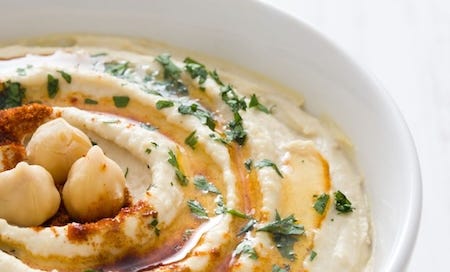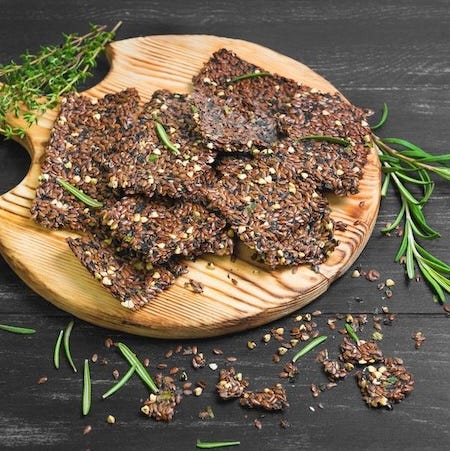Welcome to Roots! A newsletter about plant-based: eating, nutrition, lifestyle, I cover it all. Join me, Lori Osterberg, as I explore good food, great health, and Gorgeous Wellth! New here? Get started.
A friend called. Did we want to meet up for dinner? Of course!
There was a new restaurant in town, and we’d all been anxious to try it.
As a plant-based/vegan who doesn’t eat animal products, I usually do my research before agreeing to a new restaurant. This one was no different. It’s a restaurant/pub/grill that appears to have an all-around menu.
I’m happy as long as I have one option - it’s something I’ve learned to live with. As long as I have a good option, I’m happy.
In this case, it started with an appetizer. A charcuterie board filled with veggies and pita, with a hummus plate in the middle.
I fell in love. The presentation was divine. Every veggie was cut and placed with perfection. It was truly a work of art.
And the hummus … I couldn’t get enough!
I was late to the bandwagon with hummus. I didn’t much care for it when I first tried it maybe a decade ago. It was … boring.
I think I know why: Store-bought is boring. I’ve never found a brand I like. It just doesn’t have the pizzazz.
Back to this restaurant - they got it right. The flavor was Gorgeous!
So, back into the kitchen I went. I LOVE serving charcuterie boards for dinner. Who says you have to have a full-blown meal to be satisfied? Instead, create a meal with the intention of staying awhile, lingering over the food. Talking. Tasting. And doing it all again.
Are you a hummus fan? Hummus is the Arabic word for chickpeas. That makes it naturally vegan, as it’s cooked primarily with chickpeas, tahini, garlic, lemon, and salt.
Here, chickpeas matter. The better your chickpeas, the better the hummus.
Palouse Brand - non-GMO certified glyphosate residue free
Rancho Gordo - I love all their heirloom beans, and their chickpeas make exceptional hummus
Yep, you can start with dried chickpeas - I love storing them in my pantry. They’ll last “forever.”
But I’m also a realist, and know that sometimes you gotta have your hummus now. 😉 In that case, canned will do. I always go organic. Depending on where you shop, you’ll have lots of options.
I suggest buying them all, trying them all. Taste matters, and we all have different preferences. For a basic hummus, you will be able to taste the difference. Chickpeas are the main ingredient, so it only makes sense that quality matters.
So, let’s start there.
Classic Hummus
1 16-ounce can of chickpeas, drained and rinsed
½ cup good quality tahini
4-6 tablespoons lemon juice, depending on taste
2 garlic cloves, peeled and crushed
1 teaspoon cumin
Salt and pepper, to taste
¼ cup ice water
Place the chickpeas in a food processor. Blend 1 to 2 minutes until smooth, scraping the sides as you go.
Add tahini, lemon juice, garlic, cumin, salt and pepper to the chickpeas. Blend, adding ice water one tablespoon at a time until you achieve a smooth, creamy texture. Once you reach your desired consistency, taste for seasonings, and add more salt, pepper, garlic, or lemon juice as needed.
Once you have your hummus perfected, start playing with taste. Open up your spice drawer and have fun. Add things like paprika, red pepper flakes, chili powder, or more garlic. You’ll find one (or two or three) that you prefer.
Top it with chickpeas, olive oil, balsamic vinegar, herbs, nuts, or seeds. The possibilities are endless. And really, this is where you can get creative. Experiment with all the tastes you love. If you have a cupboard full of vinegars and dressings like I do, pull them out and see how they work with your hummus.
This is a supersnack! A 2-tablespoon serving will give you about 2 grams of protein, 7 percent of your daily manganese and copper, and 2 percent of your daily phosphorus, folate, iron, zinc, and thiamine. This is a great way to get lots of things a plant-based eater needs.
On your charcuterie board, you can add a variety of veggies - dipping them in hummus is a great way to eat it.
But when I’m in snack-mode, I often want salty, crunchy, and satisfying. That’s why those handy little packages of crackers have become a mainstay in the snack industry, even though those are the foods we need to avoid.
Instead of buying unhealthy crackers, I dare you to make them instead.
Why? Because they’re super easy! And once you start making your own, you’ll never go back to buying them in a store. A quick search online will bring up many recipes. Or start with one of my favorites … it’s super easy!
Seed Crackers
1 cup sunflower seeds
¾ cup pumpkin seeds
½ cup chia seeds
½ cup sesame seeds
¼ cup flaxseed
1 ½ cups water
1 tablespoon dried herbs of your choice
1 teaspoon salt
Preheat oven to 325F.
Mix all ingredients together and leave for 10-15 minutes to allow seeds to soak up the water.
Stir. Then spread the mixture on two lined baking trays. The ideal thickness is about 1/4 inch.
Bake for one hour, switching the trays halfway through. Test for crispness and return to the oven until the desired texture.
Remove from the oven and cool before storing in an airtight container.
p.s. Did you like this message? It would mean a lot to me if you’d press the ❤️ below if you liked it, left a comment 💬, or shared it with a friend. I’m trying to grow this publication, and I depend on people like you to do so!
And if you’re new here, Welcome! 💐 I’d love to start sharing my message with you if you’re interested in all things plant-powered, proaging, or finding kitchen joy. Subscribe … and then explore my entire archive! Glad to share with you! 🙋🏼♀️







